FIRST USE
PRACTICAL TIPS
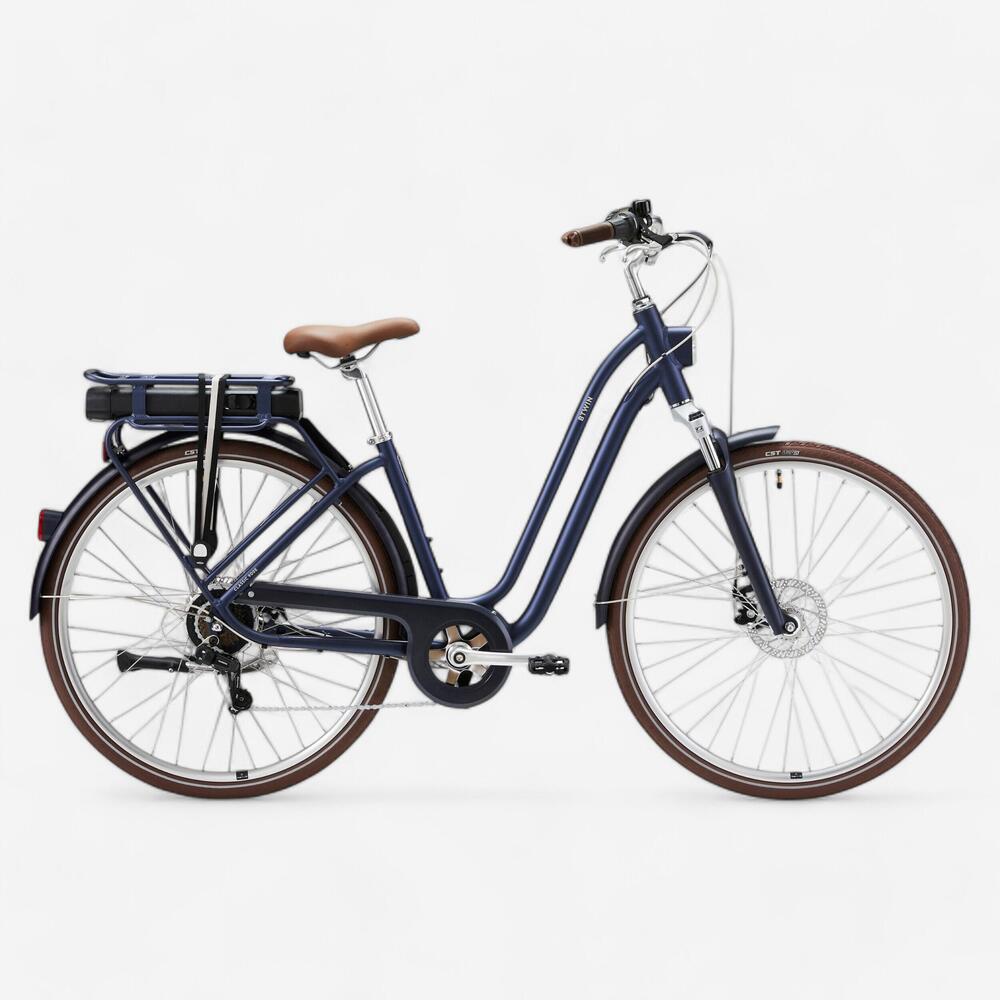
REF: 8832046
2024
Our team of enthusiasts designed this electrical assistance bike (EAB) for easier city riding: gain comfort and ride effortlessly!
Get a helping hand for your urban rides! With its pedalling sensor and battery life of up to 90 km, this EAB helps you as soon as you've made a half turn of the pedal.
ASSEMBLING YOUR CITY BIKE AT HOME. In this video we'll show you how to assemble/set up your new DECATHLON ELOPS city bike
PRACTICAL TIPS
Having the right tyre pressure is particularly important on an electric bike, The wheels have a lot of weight on them because of the combination of the motor and bike.
To minimise the risk of getting a puncture and to increase your battery life, your tyres should be between 3.5 and 5 bars.

It takes six hours to fully charge the battery after it has been completely drained.
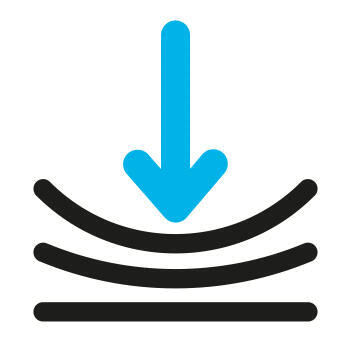
You should store your battery somewhere cool (between 10°C and 25°C) and dry, out of direct sunlight.
To avoid deep discharge, which may cause it to malfunction, do not store the battery when empty (1 flashing LED).
You should charge the battery (even if it's not being used) at least once every three months to prevent deep discharge and loss of the battery's capacity.
If you are storing the battery for a long time (more than three months without use), you should put it into standby mode to make it easier to store and avoid having to charge it regularly.

No. Lithium-ion batteries have no memory effect and can therefore be charged at any time.
We recommend charging your battery regularly to keep it working well.
Yes. The ELOPS 900 bike is an electrical assistance bike.
This assistance is only triggered when the user pedals (a motorised system that involves no pedalling is considered to be a moped, with usage restrictions and much stricter safety rules).
A pedal assist sensor located near the pedals sends information to the bike’s on-board computer, which activates the motor.
The electric bike's motor cuts out instantly if you stop pedalling.
Turning the pedals again will restart the motor so that you will benefit from the bike's electrical assistance once again.
No, it doesn't have a dynamo. Some systems let you charge the battery as you ride or brake, but this doesn't generate much power. You'd have to ride several dozen kilometres to generate 1 km of additional power.
You can buy a new battery from your local Decathlon workshop.
Contact your workshop to find out if they have your battery in stock and how long it will take to arrive.
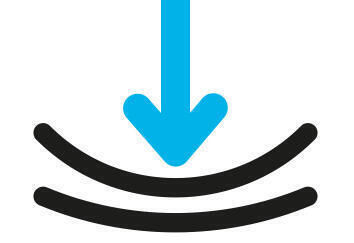
The battery is designed to be used when it's raining, but it shouldn't be submerged in water or washed with a pressure washer.
The same is true for the display and the other components and electrical cables.
Nevertheless, we recommend sheltering your bike as much as possible when you're not riding it.

Yes, the charger and the battery are designed to be plugged in 24 hours a day.
When the battery is fully charged, the charger stops charging but stays connected to the power.

It's an electrical assistance bike. That means it's entirely possible to ride without this assistance.
The extra weight of the motor system will make cycling just that little bit harder.
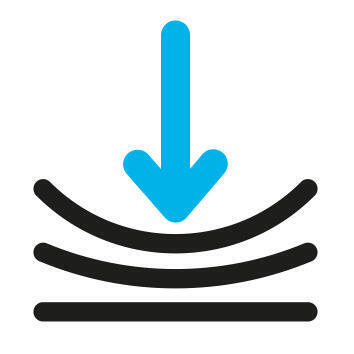
You'll find a list of frequently asked questions in the "Got a problem?" section which should help you resolve any problems you may have with your ELOPS 900 electric bike by yourself.
Alternatively you could email one of our specialist technicians, who will answer your questions and help you resolve any problems. To do so, please use this form.
You can also visit one of our Decathlon workshops, where our cycling experts will take a look at your bike.
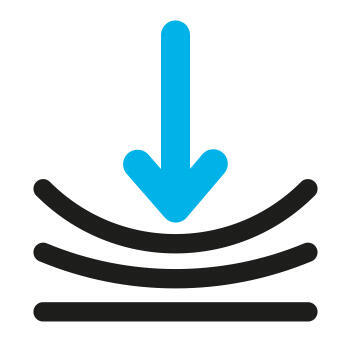
When your battery wears out, take it to your local Decathlon store, which will send it to a specialist recycling facility.

The bike turns off automatically after a few minutes if it isn't being used.
Your battery is guaranteed for 2 years or 500 cycles (1 cycle = 1 charge + 1 full drain).
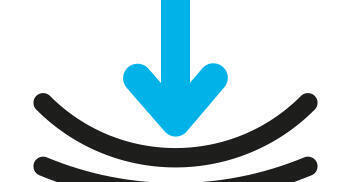
Your electric bike's range depends on a number of factors:
> THE BIKE'S LOAD: The battery life will be shorter if the bike is overloaded
> THE TYPE OF TERRAIN: The battery life will be shorter going uphill
> THE TYRE PRESSURE: The range will be better with tyres inflated between 3.5 and 5 bars.
> THE OUTSIDE TEMPERATURE: The battery life will be shorter when it's cold outside
> THE ASSISTANCE MODE USED: We recommend reducing the assistance mode when the battery is running low.
> YOUR PEDALLING CADENCE: You need to pedal if you want to go further
> WHETHER YOU FOLLOW THE BATTERY CHARGING AND STORAGE INSTRUCTIONS PROPERLY
For the ELOPS 900E, the battery will last for between 40 and 70 km. Taking good care of your bike will ensure that the battery lasts as long as possible.
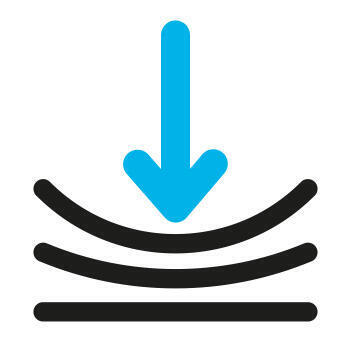
Your bike is compatible with the GROOVY baby seat sold in Decathlon stores.

Your bike is compatible with the THULE Europower bike rack available in Decathlon stores.
This bike rack can hold up to two electric bikes.
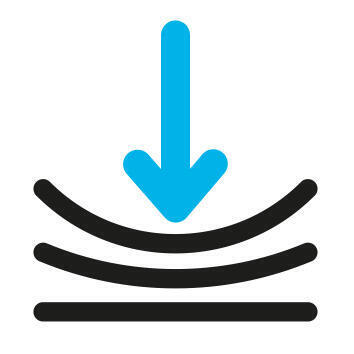
Walk mode is an electrical assistance mode that helps you move your bike when you are walking alongside it. This can come in very handy in certain situations, such as getting out of an underground garage, etc.
Walk mode allows you to push your bike along effortlessly.
To activate this mode, switch the control screen on by holding down the ON/OFF button. Then hold down the "+" button. Be careful: the bike will begin to move at a constant speed of 6 km/h.
Do not use this mode whilst on the bike. as this may damage the motor.

Standby mode enables the battery to be stored for a long period (1 year maximum) without recharging or reducing the battery capacity.
To switch the battery to standby mode, hold the battery button for 10 seconds until the battery's LEDs turn off.
Charge the battery with its charger to wake it back up.
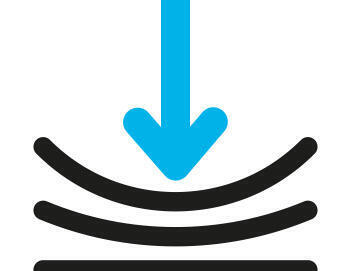
The battery is equipped with a standby mode that allows it to be stored without having to be charged regularly.
Once switched to standby, the battery can be safely stored for up to 1 year without being recharged and without affecting its capacity.
If you store the battery without placing it in standby mode, you must charge the battery at least once every 3 months to maintain its performance.

To reset the kilometre counter (TRIP) to zero, once the screen is on, hold down the " - " button on the command screen for 10 seconds.
To change from km/h to mph or vice-versa, hold down the "SET" button to go into settings.
Units can be selected in the SET 3 setting.
Having trouble with your bike? You can find our FAQs here.
Your lock can be replaced at a Decathlon workshop. A new lock will be fitted and you will be given a new pair of keys.
Contact your Decathlon workshop to find out if the part is in stock and how long it will take to be delivered.
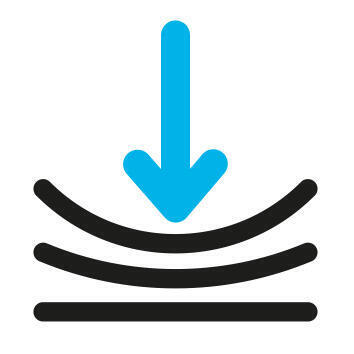
1. Check that there isn't any dirt in the way of the connection
Your battery charger's connectors should be clean and there should be no dirt preventing contact between the battery and its connector.
2. Check the battery > charger > mains socket connection
> Make sure the charger you are using is the one provided by Decathlon
> Connect the charger to the battery and a mains socket.
Orange LED = the battery is charging
Green LED = the battery has finished charging
Flashing LED = charging problem
A completely drained battery will take 6 hours to charge fully.
If the problem persists, contact us or visit one of our Decathlon workshops.
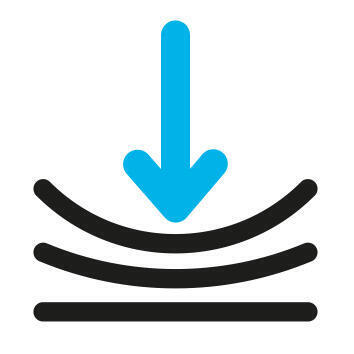
1. Check that the battery is well charged
An almost empty battery can cause a jerking effect while riding before going completely flat.
> Press the battery button
> Check that at least one LED lights up
> If none of the LEDs light up or the first or second LEDs are flashing, recharge the battery
2. Check that the battery is clean, properly attached and locked in place
> Check that the battery's connectors and holder are clean and in good condition.
> The battery should be pushed all the way into its holder
When you push it in, it will click to indicate that it is correctly in place.
Lock the battery and remove the key.
3. Check the connectors on the pedalling sensor (the thinnest cable).
> To do this, open the rip-tab cable cover behind the saddle and find the pedalling sensor connector (the thinnest cable).
> Disconnect the pair of connectors
> Check that the pedalling sensor connectors are in good condition and correctly pushed in. Re-insert the connectors if necessary.
4. Check that the pedalling sensor on the left of the bike, on the other side to the chainset (by the left crank), has not slipped onto the bottom bracket.
If it has slipped against the crank, gently move it back up against the frame.
If it won't stay in position, apply a blob of glue to the back of the sensor and press it against the frame.
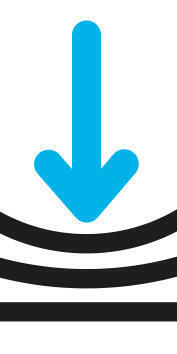
1. Check the tyre pressure
> The tyre pressure determines how efficiently your electrical assistance works. Before you go out for a ride, make sure the tyres are inflated to between 3.5 bar and 5 bars.
2. Make sure you don't overload your bike
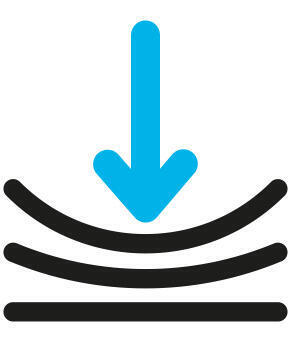
The electric assistance starts after several pedal strokes, and only if the assist mode has been activated.
If the electric assistance still doesn’t start, follow these instructions:
1. Check that the battery is well charged
> Press the battery button
> Check that at least one LED is turning on
> If one of the LEDs is flashing, recharge the battery by connecting it to its charger and a socket
2. Check that the battery is clean, properly attached and locked in place
> Check that the battery's connectors and holder are clean and in good condition.
> The battery should be pushed all the way into its holder
When you push it in, it will click to indicate that it is correctly in place.
Lock the battery and remove the key.
3. Check all of the bike's connectors: brakes, motor, console, pedalling sensor, controller (controller = central processing unit of the electrical kit. It is located just behind the battery, on the pannier rack)
To access most of the connectors, you'll need to open or slide off the neoprene cover that's protecting the electrical cables. The motor's connector is the only one that is not covered.
HOW TO CHECK THE BIKE'S CONNECTIONS:
There are two types of connection on your bike: "screw-in" connectors and "push-in" connectors.
"Screw-in" connections
For "screw-in" connections, which you can recognise from the two metal rings, you will need to unscrew both rings in order to disconnect the cables. Be careful not to lose the small plastic washer between the two rings when you unscrew them.
Once undone, check that each connector is clean, then reconnect it.
To do this, position the male and female connectors opposite each other. Make sure you line up the indicator arrows before pushing them in.
Screw the two metal rings as far as they will go to secure the connector.
"Push-in"connections
The male connector is simply inserted into the female connector. Check that both connectors are fully inserted, and push them back in if necessary.
4. Test the electrical assistance
> Turn on the screen by holding down the ON/OFF button
> Get on your bike and pedal (you'll need to turn the pedals several times to trigger the electrical assistance).
If the problem persists, submit a support request or visit a Decathlon workshop.

1. Make sure you are using and storing it as recommended
Your electric bike's battery life depends on various things:
> THE BIKE'S LOAD: The battery life will be shorter if the bike is overloaded
> THE TYPE OF TERRAIN: The battery life will be shorter going uphill
> THE TYRE PRESSURE: The battery life will be better with tyres inflated to between 3.5 and 5 bars.
> THE OUTSIDE TEMPERATURE: The battery life will be shorter when it's cold outside (up to 50% less)
> THE ASSISTANCE MODE USED: We recommend reducing the assistance mode when the battery is running low.
> YOUR PEDALLING CADENCE: You need to pedal if you want to go further
> WHETHER YOU FOLLOW THE BATTERY CHARGING AND STORAGE INSTRUCTIONS PROPERLY
For the ELOPS 900E, the battery will last for between 60 and 90 km. Taking good care of your bike will ensure that the battery lasts as long as possible.
2. An old battery may lose some performance
Its range will therefore be shorter. Visit your Decathlon workshop to give your battery a check-up.
To switch on the Elops 900E's screen, hold down the "ON / OFF" button.
If the screen still doesn't light up, follow this procedure:
1. Check that the battery is well charged
> Press the battery button
> Check that at least one LED is turning on
> If one of the LEDs is flashing, recharge the battery by connecting it to its charger and a socket
2. Check that the battery is clean, properly attached and locked in place
> Check that the battery's connectors and holder are clean and in good condition.
> The battery should be pushed all the way into its holder
When you push it in, it will click to indicate that it is correctly in place.
Lock the battery and remove the key.
3. Check that the cable linking the console to the controller is connected (the controller is the central processing unit under the pannier rack, just behind the battery)
> Open the rip-tab cable cover that you'll find between the pannier rack and the saddle.
> Check the accessory cable connection (the one with the metal rings).
> To check if the connectors are clean, in good condition and correctly inserted, unscrew both rings on either side of the black washer.
> Check that each connector is clean and in good condition
> Reconnect everything properly. To do this, position each male and female connector opposite each other and align the indicator arrows before pushing them back in. Make sure you don't forget the washer between the two rings.
> Screw the knobs as tightly as possible to secure the connection.
4. Check that the display is connected
> At the front of the bike, slide the neoprene cover off the screen to reveal the pair of connectors for the screen (black).
> Do the same as before to check the console's connections.
5. Turn the screen on by holding down the ON/OFF button
If the problem persists, submit a support request or visit a Decathlon workshop.
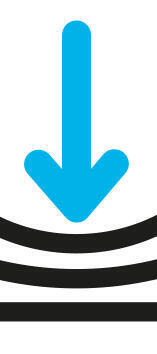
New batteries are stored in hibernation mode to prevent them from wearing out.
The first time you use your battery, you should connect it to its charger and plug it in to a socket to get it working.
If the problem persists and the battery still doesn't turn on, submit a support request or visit a Decathlon workshop.
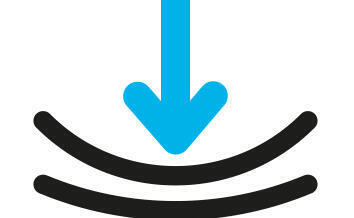
> 1st LED is flashing: The battery is almost empty and needs to be charged. Plug it into its charger and connect it to a mains socket to charge it.
> The second LED is flashing: The battery is in "undervoltage" protection mode due to improper handling or a long period without recharging. Plug it into its charger and a mains socket as soon as possible to recharge it, which will take it out of protection mode
> If there is another flashing LED or several flashing LEDs, the battery is faulty. Take your battery to a Decathlon workshop for full testing.

The electric assistance should cut out automatically when one of the brake levers is applied.
If this is not the case, check that the connections of both brake levers are in good condition and correctly inserted.
> Slide down the two neoprene cable covers at the front of the bike to uncover the brake connectors (yellow connectors)
> To check whether the connectors are clean, in good condition and correctly pushed in, unscrew the two rings on either side of the black washer.
> Check that each connector is clean and in good condition
> Reconnect everything properly. To do this, position each male and female connector opposite each other and align the indicator arrows before pushing them back in. Make sure you don't forget the washer between the two rings.
> Screw the knobs as tightly as possible to secure the connection.
If the problem persists, submit a support request or visit a Decathlon workshop.

Err 10 / 12: UNDERVOLTAGE
> Charge the battery.
Err 11: BATTERY OVER-VOLTAGE
> Switch the bike off and back on again
Err 20 / 24 / 25: ABNORMAL CURRENT OR VOLTAGE
> Charge the battery, switch the bike off and on again
Err 21 / 23: TEMPERATURE SENSOR ERROR
> Switch the bike off and back on again
Err 26 / 80 / 82 / 83 / 84: CONTROLLER PROGRAM ERROR
> Switch the bike off and back on again
Err 30: WALK MODE ERROR
> Switch the bike off and back on again. Be careful not to overload the motor when using the WALK mode (low gradient, no load on the bike).
Err 40 / 41 / 44: MOTOR OVER-VOLTAGE OR OVERHEATING
>Allow the motor to rest by pedalling less hard or reducing the assistance mode.
Err 42 / 44: MOTOR FAULT OR SHORT-CIRCUIT
>Check that the screen connector is firmly in place. Restart the bike.
Err 45: MOTOR FUNCTION ERROR
> Switch the bike off and back on again
Err 46: MOTOR ERROR
>Check that the motor connections are securely connected. Switch the bike off and back on again.
Err 60: COMMUNICATION ERROR BETWEEN DISPLAY AND CONTROLLER
> Check that the display connector is firmly in place. Restart the bike.
Err 70 / 71 / 72 / 73: TORQUE SENSOR ERROR
> Switch the bike off and back on again
Err 81: SPEED NOT RECOGNISED
> Check that the motor connectors are properly fitted. Restart the bike.
Err 200 / 201 / 202: TORQUE OR CADENCE SENSOR ERROR
> Switch the bike off and back on again
Check that the battery is pushed in all the way and remember to lock it in place before each use.
If it isn't pushed in fully or if it shakes around during use (due to it not being locked), it will struggle to connect properly to the rest of the system and data such as the charge level won't be accurately transmitted.
Check that the motor connector is in good condition and properly inserted. If it is damaged (bent socket), dirty, or only partially connected (because it is not fully inserted), the speed information sent by the motor to the control screen will not display correctly.
Clean the connector or push it all the way in so that the speed displays normally.
If the problem persists, submit a support request or visit your local Decathlon store for a diagnosis and repair.
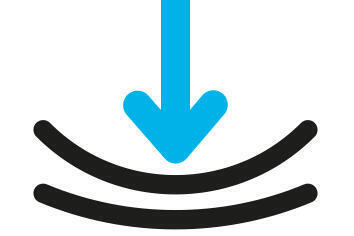

If the issue is still unresolved, or does not appear on the list, please click here to request assistance.
Regular maintenance is important if you want to keep your bike working efficiently for as long as possible, so we've put together some maintenance tips to help you.
1. Before each ride, make sure your tyres are inflated to between 3.5 and 5 bars.
2. Charge the battery fully at least once every 3 months.
3. If you're not going to be using it for a long time, switch the battery to standby mode.
4. Store the battery in a dry place, at a moderate temperature, and out of the sun.
You can find spare parts for your ELOPS 900 E - HIGH AND LOW FRAME at our Decathlon workshops and on our website.
BTWIN offers a lifetime warranty on the frame, handlebar and stem subject to the bike being used under normal conditions. All other components such as the fork (battery, electrical components, and mechanical components excluding wearing parts) and labour come with a 2-year warranty from the purchase date.